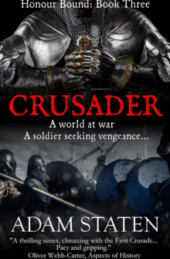Anne O’Brien is renowned for uncovering the voices of forgotten women in medieval history. A Marriage of Fortune is no exception, offering insight into female experiences of life in England during the War of the Roses and the early Tudor period.
This novel follows the Paston women: both those within the family, and those whose lives were irrevocably changed by their encounters with Paston men. Set between the 1460s and 1480s, this novel has been inspired by the ‘Paston Letters’ collection. O’Brien brings to life the Paston family with her captivating storytelling, using these letters as inspiration for the creation of a narrative in which medieval women are finally placed back at the centre of their own stories. She also brings awareness to the value of letters, Wills and other written documents, as enduring testaments of medieval women’s lives.
A Marriage of Fortune predominantly follows Paston matriarch Margaret, her daughter Margery, and her son’s love interest, Anne Haute. As Margaret navigates life as a widowed mother, she must battle against threats to her family’s financial security. Refusing to allow her family’s future to be determined by the policies and politics of men, Margaret feels her only way to protect the Paston legacy is to use her daughters to create advantageous marriage alliances. Her anger at her children jeopardising their property, prosperity and position in society with their choices, is tinged with her omnipresent fear that there will come a time when she will no longer be able to champion her children’s future. Anne O’Brien masters this emotional balance beautifully.
Meanwhile, Margaret’s eldest son, Sir John, needs only to legalise his marriage per verba de presenti to the Queen’s cousin, Anne Haute, to change the fate of the Paston family. Yet, he seems unable to commit. Rather than focusing on Sir John’s perspective, O’Brien offers a voice to another silenced woman in history: we witness the impact of Sir John’s erratic behaviour on Anne’s mental state, her perpetual uncertainty, her love and loathing for her betrothed, and her fear that history will forget her and her experiences if she isn’t legally bound to Sir John.
Perhaps the most emotionally powerful narrative in A Marriage of Fortune is that of Margaret’s daughter, Margery, who must choose whether to disregard her mother’s ambitions for her and face being ostracised, when she falls in love with a man below her station. Following her decisions, her mother’s tortured conscience, and the heartbreak and hope that ensues, this novel shows how a woman’s status does not always have to be altered by the decisions of men: sometimes, a woman’s reclaiming of her agency can change the lives of many.
Anne O’Brien is impressive in her intertwining of the Paston women’s stories, showing the plethora of female experiences of marriage, love, desire, loss and motherhood during this period. Margaret Paston repeats the motto ‘I am a woman of infinite resources’ when faced with seemingly impossible odds. Her resilience, and that of her fellow female protagonists, is the enduring legacy of this novel.
Ella Beales is a Historical Researcher, Archivist and Public Historian.







